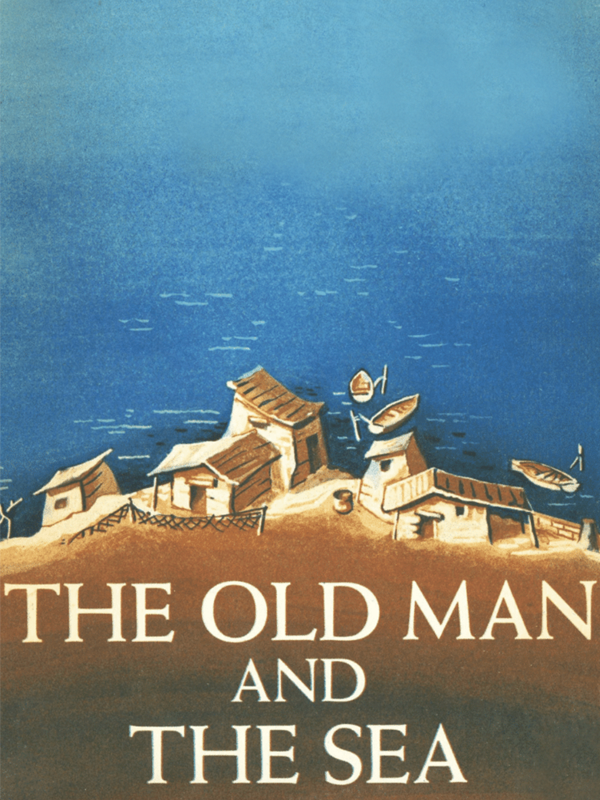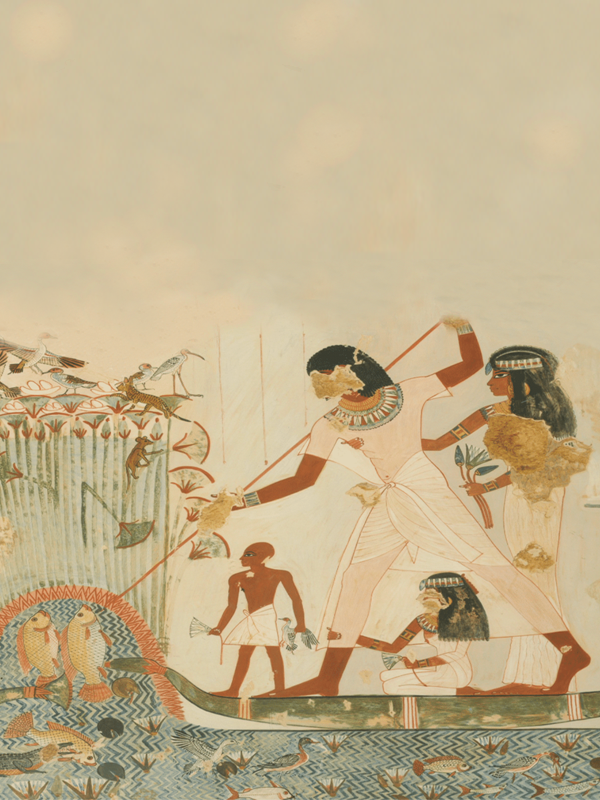
Lady Juliana Berners
Lady Juliana Berners

Medieval historians argue about her. They are not sure that Lady Juliana Berners existed, nor especially, as we will see later, that she wrote the famous “treaty”.
The Treatyse of Fysshynge wyth an Angle was first printed in 1496 at Westminster, by Wynkyn de Worde, with the second edition of the Book of Saint Albans, which contained three parts, dealing with hunting, falconry and heraldry, all of which were necessary for the education of a gentleman of the time. The Treatise on angling was therefore included and the work appeared to be complete, covering all the sports of the countryside.
Wynkyn de Worde, the publisher and printer, attributes the authorship of all the parts (venery, falconry, heraldry and fishing) to a certain Lady Juliana Barnes or Bernes, better known, thanks to the fortunes of early typography, under the pretty poetic name of Lady Juliana Berners. As for the famous Treatyse of Fisshynge, which does exist, it might have been translated from a French manuscript now lost or “forgotten” in the archives of some monastery.

Facsimile of a reprint of the "Treaty" of angling.
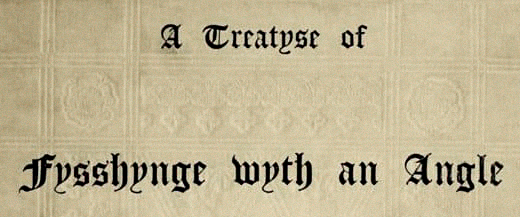
In English, if the term "fishing" refers to the action of fishing in general, including with a net, the term "angling" restricts the action of catching a fish or fish, exclusively with a line. The latter term comes from the "treatyse of fisshynge wyth an angle", referring to the angle that the end of the rod makes with the line attached to it.

To return to Dame Juliana Berners, there is no record of her birth. She would have been the daughter of Sir James Berners, adviser to King Richard II. A heartbreak would have led her to retire to the Priory of the Benedictine Convent of Sopwell. Wynkin de Worde presents her as the mother superior of the convent. However, the preserved registers of the priory of Sopwell do not mention her existence at all. It is nevertheless surprising that the mother superior is not mentioned in the priory’s archives, although from 1310 to its dissolution in 1537, eight mother superiors are listed by name.
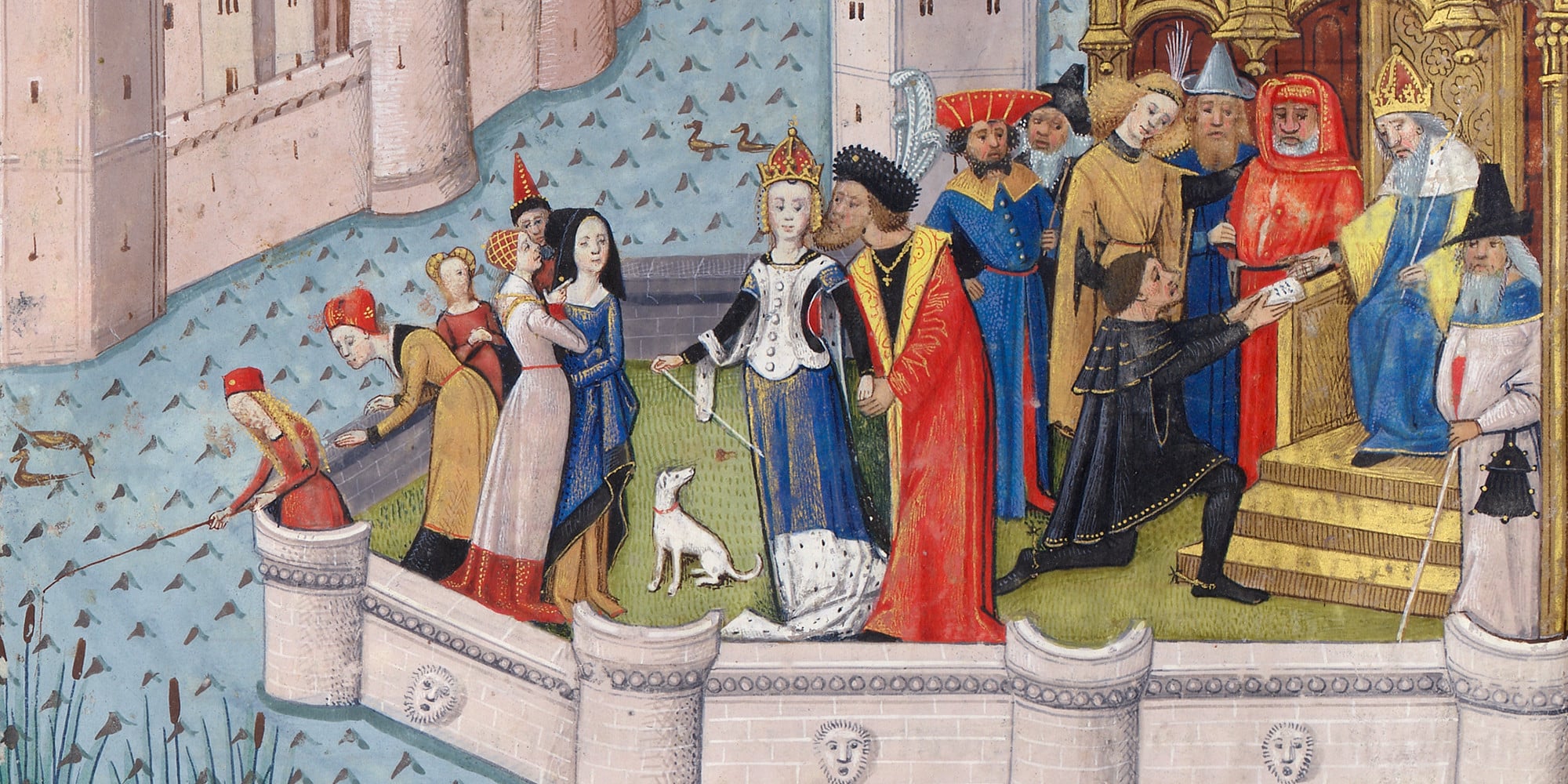
In this illumination of a medieval manuscript describing courtly love, a young woman with long blonde braids can be clearly seen angling in the moat of a castle.
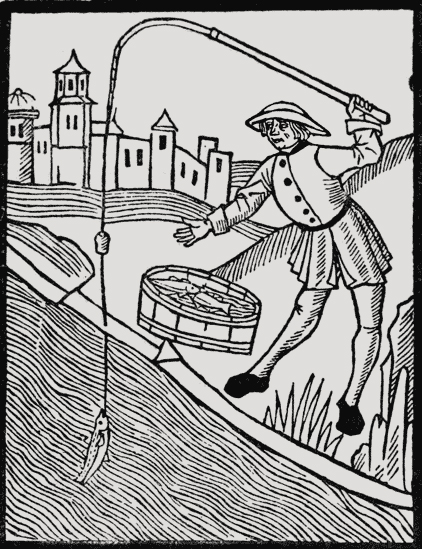
This woodcut, illustrating the "Treatyse", shows a gentleman easily recognizable by his clothes, catching a trout with an angle, recognizable by the spots on his livery.
At that time, copyright was not protected and the compilation or translation of manuscripts was the specialty of many monasteries. Besides the text printed by Wynkyn de Worde, there is an older but unfortunately incomplete manuscript text on angling. This manuscript, dated about 1450, differs in some respects from the printed version of 1496 and in others can only have served as a reference. In any case, whoever was the author of the Treatyse of Fyshynge, he or she recognizes borrowings from earlier texts. On the subject of carp, a newly introduced fish in the British Isles, the author warns us that some baits are better than others, as I have heard from credible people but also as I have found written in serious books (bokes of credence).
The “Treatyse of fisshynge” was published sixteen times before 1600.
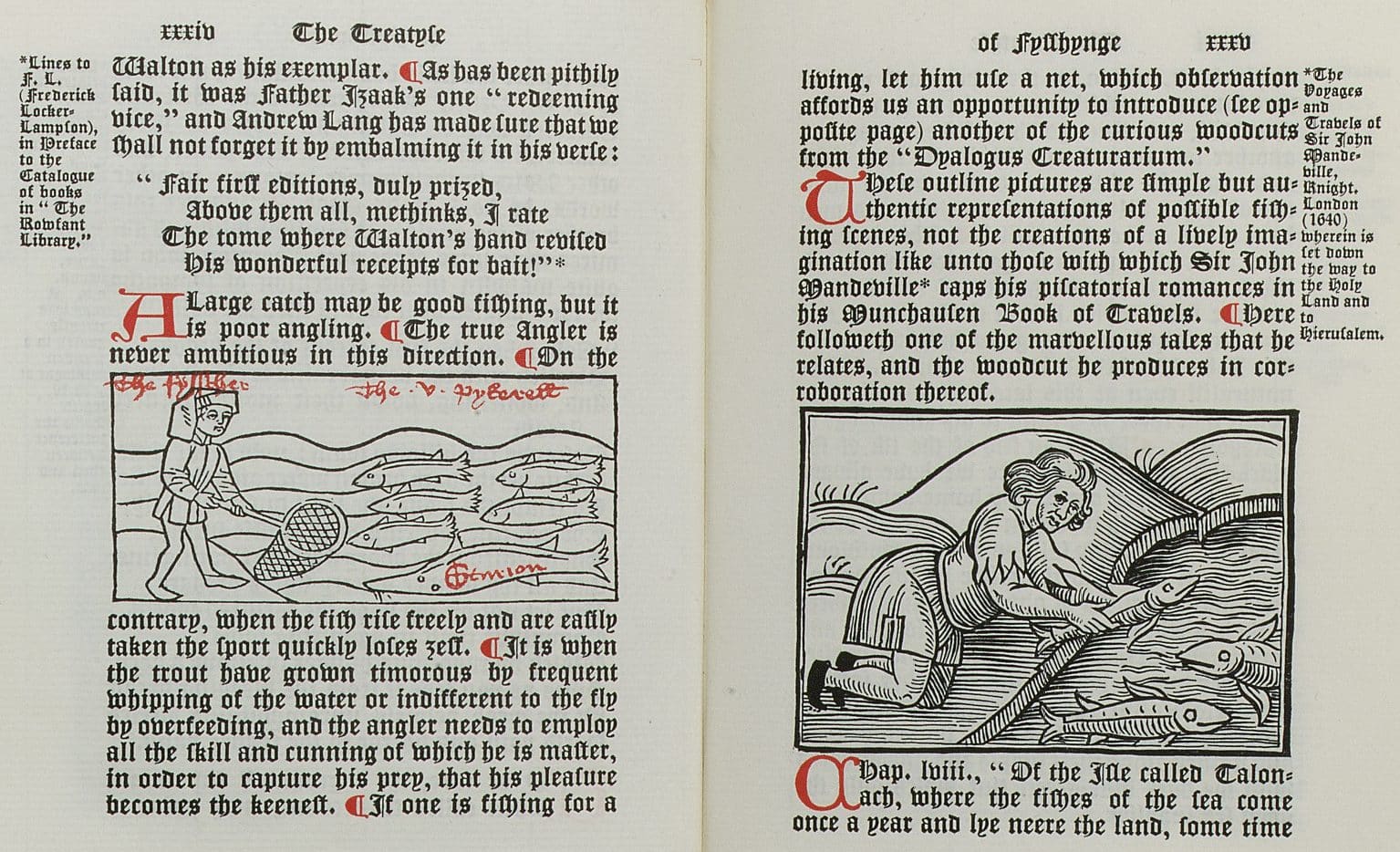
In this reprint of a 17th century book on fishing as entertainment, it is made clear that catching a lot of fish with a net can be considered good fishing, but not poor angling, as a gentleman should practice it.
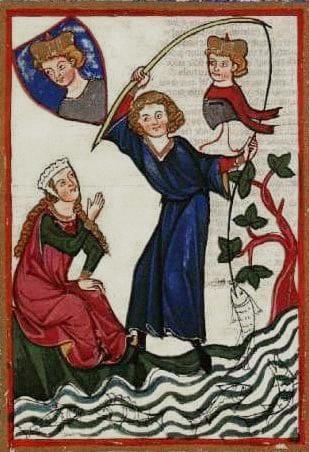
Whether or not Lady Juliana existed is not that important. What is important is that the Treatyse of Fyshynge has come down to us, because it gives us very detailed information on the gear and angling techniques used in medieval times, in England but also in France in rivers and ponds. Much more surprisingly, the Treatyse tells us that angling, apparently reserved for the well-born, was already at that time a distraction or a sport, and not a lowly utilitarian means to catch fish.
The Treatyse was an enormous success in the book trade, perhaps the first success of publishing, since it had at least sixteen editions before 1600. We see at least two good reasons for this success. First of all it is very pleasantly written, lively and pleasant to read, but above all it is very complete and didactic as we would say today.

Different sizes of floats or plugs.
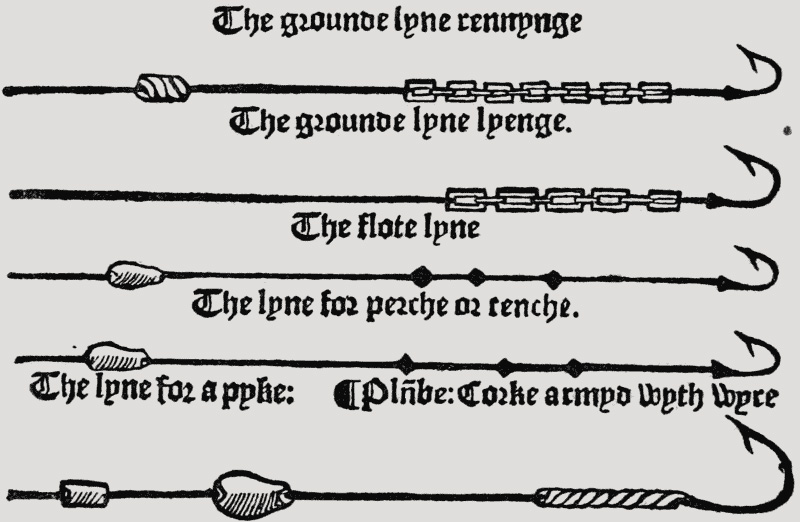
Still in the treatise of 1496, are very clearly shown, the different ways to lead the lines, including with a strand of chain for the fishing of the pike, whose teeth would not otherwise fail to cut the bottom line.

Different sizes of hand forged hooks.
Indeed, the most important part gives for each species of fish, the indications on the equipment, the baits, the places, the seasons, the particularities and the best techniques to use, in order not to come back empty-handed. The innumerable fishing treatises that followed that of Lady Juliana Berners, have essentially taken up this plan and its developments.
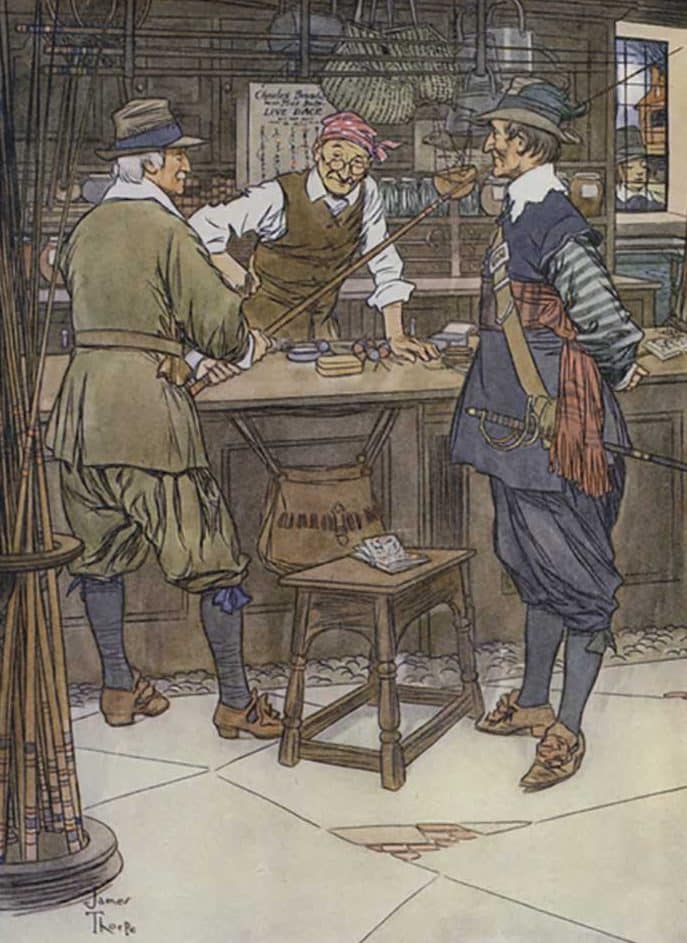
About two centuries after the publication of the "Treatyse", these two recreational fishermen, come to equip themselves in a London store, already very specialized and very well stocked.
The most famous of them, Isaac Walton’s famous “Compleat Angler”, first published in 1653 and which remains today, with more than four hundred reissues, the book with the greatest number of times published after the Holy Bible, owes a great deal to Treatyse. Walton embroidered, while adding his own experience, on the framework that the latter offered him. His selection of artificial flies copies the 1496 list word for word, as do the baits, pastes and leaders.

Detail of the famous stained glass window in Winchester Cathedral, overhanging the tombstone of Izaac Walton, and depicting him with all his fishing gear, reading a poem by the river.


